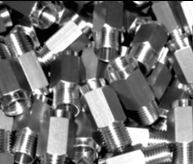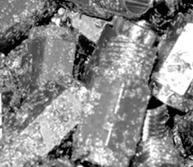 Studies show that human beings are not particularly good and multitasking, despite our belief that we can successfully do more than one thing at a time. That’s why talking and texting while driving leads to so many bad outcomes.
Studies show that human beings are not particularly good and multitasking, despite our belief that we can successfully do more than one thing at a time. That’s why talking and texting while driving leads to so many bad outcomes.
 Studies show that human beings are not particularly good and multitasking, despite our belief that we can successfully do more than one thing at a time. That’s why talking and texting while driving leads to so many bad outcomes.
Studies show that human beings are not particularly good and multitasking, despite our belief that we can successfully do more than one thing at a time. That’s why talking and texting while driving leads to so many bad outcomes.
.jpg) Trochoidal milling can help resolve many challenging CNC machining operations such as:
Trochoidal milling can help resolve many challenging CNC machining operations such as:
The distinguishing characteristic of a Swiss-style turning machine is the sliding headstock that feeds bar stock through a guide bushing. This feature enables the precise, high volume machining of many parts, especially those with small diameters. Because of the importance of accurate guide bushing positioning and spindle performance, how these components are crafted is vitally important.

 Workpieces often leave a machine tool covered with metal dust, dirt, chip remnants and machine oils. Whether these are parts for your own products or components to be shipped to a customer, they typically need thorough cleaning. Doing so manually means increased labor costs, machine downtime and the cost of cleaning agents, as well as their proper disposal, whether solvent- or aqueous-based.
Workpieces often leave a machine tool covered with metal dust, dirt, chip remnants and machine oils. Whether these are parts for your own products or components to be shipped to a customer, they typically need thorough cleaning. Doing so manually means increased labor costs, machine downtime and the cost of cleaning agents, as well as their proper disposal, whether solvent- or aqueous-based.
 Shortening machining cycle time, reducing labor costs and extending tool life can all play a major role in improving productivity and, thereby, your bottom line. While using the most advanced machine tools is certainly a key component in achieving greater productivity, it’s not the entire answer. It’s equally important to optimize all aspects of a manufacturing operation from raw materials through delivery to the customer.
Shortening machining cycle time, reducing labor costs and extending tool life can all play a major role in improving productivity and, thereby, your bottom line. While using the most advanced machine tools is certainly a key component in achieving greater productivity, it’s not the entire answer. It’s equally important to optimize all aspects of a manufacturing operation from raw materials through delivery to the customer.
 Two Okuma CNC machines used to make pipe couplings are tended by a FANUC R2000 iB robot in this 2-minute video. The robot uses two sets of grippers to load and unload the parts from each machine tool which greatly reduces mind-numbing, repetitive labor to free the machine operator for other tasks, reduce cost-per-part and keep the process running smoothly.
Two Okuma CNC machines used to make pipe couplings are tended by a FANUC R2000 iB robot in this 2-minute video. The robot uses two sets of grippers to load and unload the parts from each machine tool which greatly reduces mind-numbing, repetitive labor to free the machine operator for other tasks, reduce cost-per-part and keep the process running smoothly.
This video shows a grinding cell incorporating an Okuma GA-47 grinder with a FANUC robot equipped with a vision system and manually adjustable grippers. The Okuma grinder has a flexible, 2-axis configuration for greater versatility and handles parts up to 60” long, weighing as much as 660 lbs.
The cycle time for the operation is reduced by 62%, from the original time of 45 minutes to just 16.8 minutes. In addition to dramatically improving cycle time, one operator can now manage multiple cells, which greatly reduces labor costs-per-part. The new cell also eliminates the need for workers to physically manage extremely heavy parts.
 Some manufacturing people think robotic-assisted CNC machining is strictly for high-volume production. In fact, even small production runs can benefit from automating repetitive processes and freeing machine operators to manage multiple workstations.
Some manufacturing people think robotic-assisted CNC machining is strictly for high-volume production. In fact, even small production runs can benefit from automating repetitive processes and freeing machine operators to manage multiple workstations.
 A dozen APPs are ready to download from cutting tool maker Sandvik Coromant for smart phones and tablets. Here are a few examples:
A dozen APPs are ready to download from cutting tool maker Sandvik Coromant for smart phones and tablets. Here are a few examples:
 Just like the online sites you visit to download the latest APPs for your smart phones, tablets and computers, you can now access productivity-enhancing APPs for your Okuma CNC machines from the Okuma APP Store. You can also get a first-hand look at the APP Store in the Okuma booth at IMTS 2014.
Just like the online sites you visit to download the latest APPs for your smart phones, tablets and computers, you can now access productivity-enhancing APPs for your Okuma CNC machines from the Okuma APP Store. You can also get a first-hand look at the APP Store in the Okuma booth at IMTS 2014.